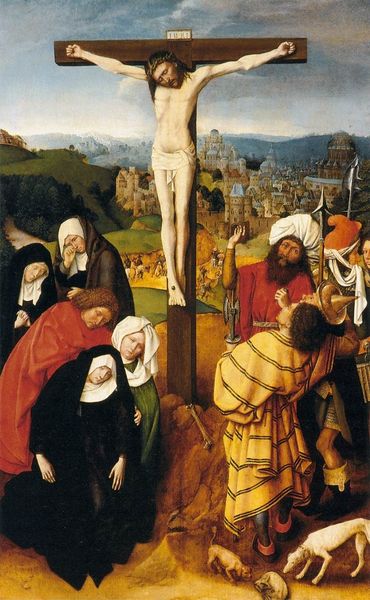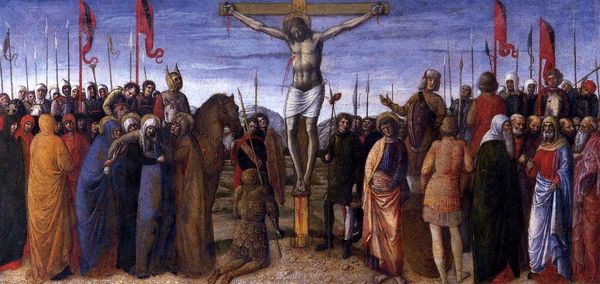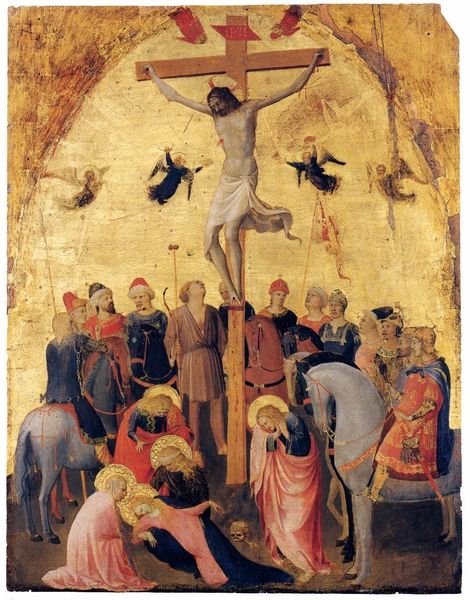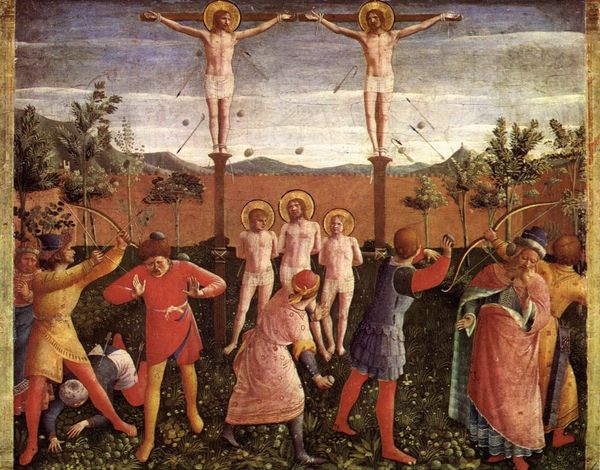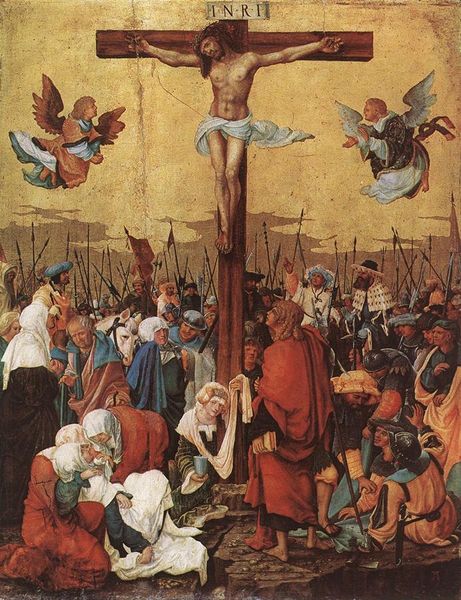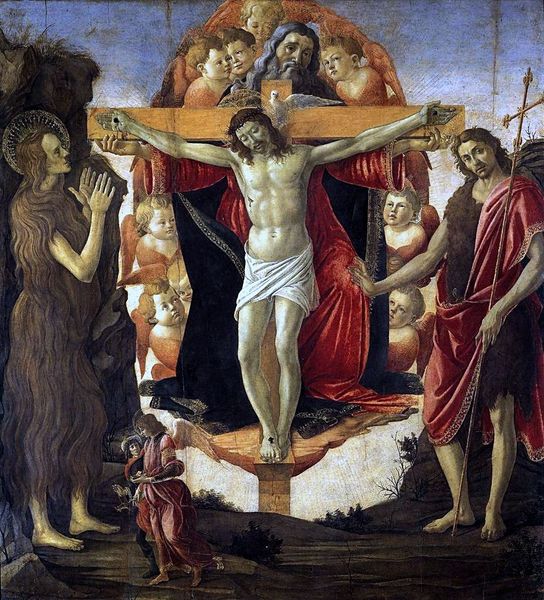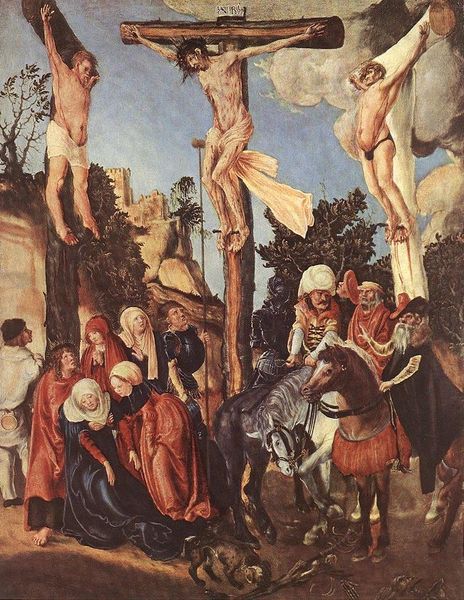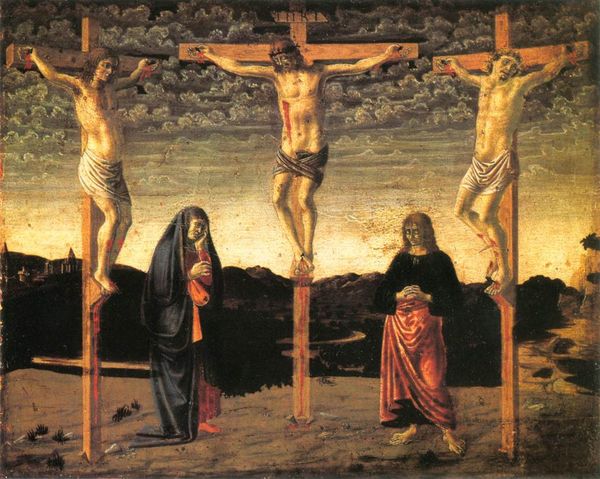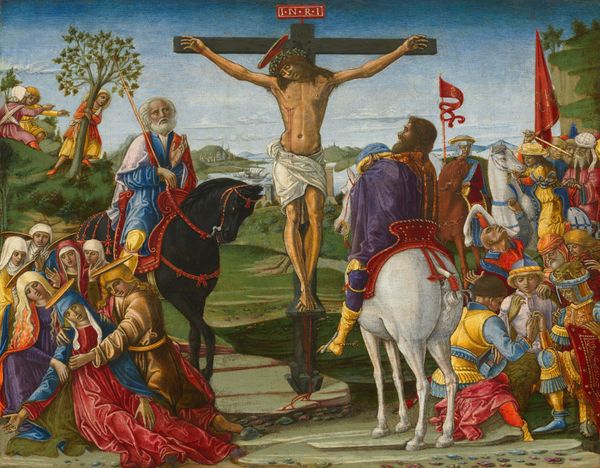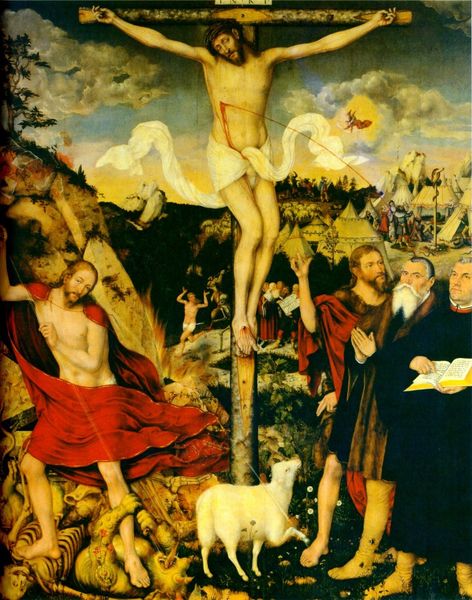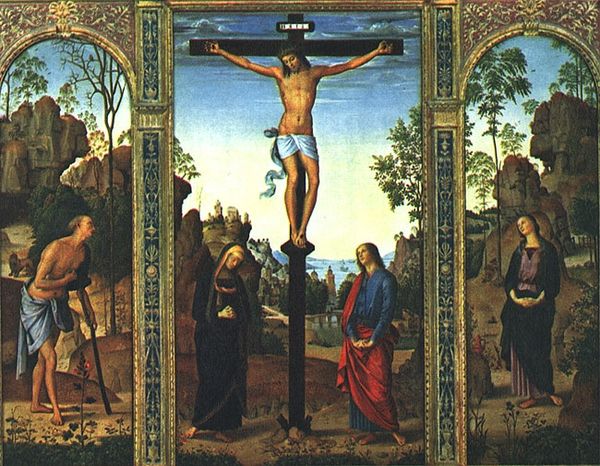
#
acrylic
#
abstract painting
#
possibly oil pastel
#
oil painting
#
jesus-christ
#
neo expressionist
#
acrylic on canvas
#
underpainting
#
christianity
#
mythology
#
painting painterly
#
crucifixion
#
chaotic composition
#
expressionist
#
christ
Dimensions: 62 x 121 cm
Copyright: Public domain
Curator: This emotionally charged piece is titled "Crucifixion," painted around 1500 by Jan Provoost. It’s currently housed here at the Groeningemuseum in Bruges. What are your initial thoughts? Editor: Overwhelming is the first word that comes to mind. The canvas is teeming with figures; a swirl of activity set against that unsettlingly placid, idyllic backdrop. Curator: Exactly! Provoost sets a familiar biblical scene within a recognizable landscape, a technique intended to situate the viewer within the event. But let's consider how socio-political forces play into this. The large-scale drama makes this very much a public spectacle. Who has the power in this scene, and who is powerless? How are those roles conveyed? Editor: Certainly, the power dynamics are central. The soldiers and officials on horseback assert dominance while Christ and the other condemned men, elevated, are ironically vulnerable. However, focusing on intersectionality here, Provoost invites us to think about it from different gender perspectives too, doesn't he? Look at the fainting women huddled at the foot of the cross—they exemplify the prescribed emotional expression expected of women, whilst the stoicism is projected more on the male characters. Curator: A brilliant observation. We can consider how the female figures’ grief becomes another spectacle. Note how the artist paints in an earlier, pre-Reformation era; the inclusion of certain details may indeed reflect anxieties about changing gender roles. It highlights how art served specific social and didactic purposes, communicating ideological positions prevalent in that historical period. Editor: And the symbolism…the skull at the bottom of the frame a morbid memento mori. Death is both imminent and instructional. There is an intention, as there always is. And looking at the gazes—only a couple people look toward Christ, which is a curious decision and creates more isolation around Christ. Curator: Indeed. Provost’s “Crucifixion” powerfully represents the intersection of faith, power, and societal anxieties within the shifting landscape of early 16th century Europe. Editor: Precisely, its power lies in revealing how those complex social forces shaped not just the world of the painting, but also its reception through time.
Comments
No comments
Be the first to comment and join the conversation on the ultimate creative platform.

